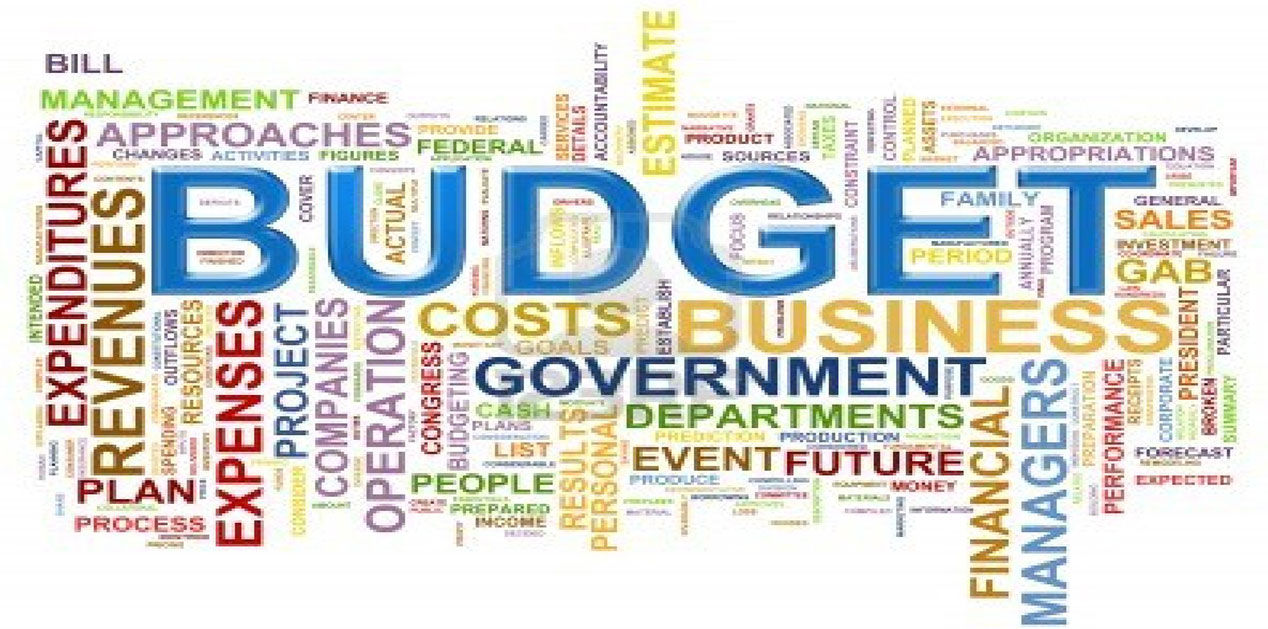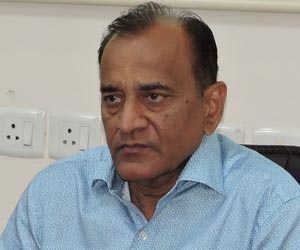If you are a tennis buff, the country’s Union Budget is akin to the Australian Open. Just as this tournament, held in January every year, marks the beginning of the Grand Slam season, the Budget presented in February marks the start of the Government’s economic agenda for the year ahead. The Union Budget is always a much anticipated event as it is a great leveler; it impacts everyone from the farmer to the industrialist, from the enthusiastic investor in stocks to those who cannot differentiate between Dalal Street and Fleet Street, and from the unemployed to the exorbitantly highly paid professional. And since Budgets, although financial by definition, have been essentially political instruments in the hands of Governments and used as such by the Opposition too, they have acquired an added sense of importance. These being the established facts, there should have been no reason to single out the forthcoming Union Budget as being anything different from the earlier ones.
But there are at least six good reasons why the Budget for 2017-18 fiscal will be special. Since we do not know the proposals that will be unveiled in Parliament, those cannot be among the reasons. What we do know, though, makes this Budget doubly important, both in political and economic terms. At the risk of some exaggeration, it can be said that the Budget for 2017-18 is as critical as Prime Minister Narasimha Rao’s 1991 Budget (presented by his Finance Minister Manmohan Singh) was — though for different reasons. The 1991 document was in the backdrop of a make-or-break situation for the Indian economy; the 2017 one does not have to save a sinking ship but to give wind to the sails of a vessel which is already sailing majestically at sea but is facing some turbulence.
The first reason is that this Budget is set to break a colonial tradition of being presented on the last working day of February. The Government has decided to place it before Parliament on February 1 — an advancement by a full month. The Government has argued that an early presentation would give all stakeholders more time to plan and utilise to the optimum, the funds allocated. Indeed, it makes sense to complete the legislative part of the Budget business latest by March 31, which is the last day of the current fiscal. If the Government can get the Appropriation Bill and the Finance Bill passed in Parliament by then, the Budget proposals can be implemented from April 1. Until now, the legislative business for the Budget began on the last working day of February and went on until the end of April. It meant that the funds allocated to departments and ministries became available effectively only from June onward, leaving the beneficiaries barely eight months to utilise the money.
In advancing the Budget, the Government’s intention has been to give more time and space for the implementation of its programmes and policies. However, certain opposition parties have taken offence at the decision. Since they cannot contest the logic the Government has forwarded in favour of an early Budget, they have taken the political route to do so, claiming that the Budget should be presented at a later date because it would impact the level-playing field needed ahead of elections to five States. Some of these parties approached the Election Commission of India, requesting it to intervene and order a hold on the Budget until the elections are done with. The ruling Bharatiya Janata Party has argued that the Budget is a constitutional exercise which cannot be held ransom to political considerations; that Government business cannot be brought to a halt on the pretext of elections; that the Union Budget has a pan-India impact and is not addressed to specific States or regions; and that, therefore, the level-playing field is not affected in the BJP’s favour as a result.
Meanwhile, a lawyer has filed a public interest petition (PIL) in the Supreme Court seeking a deferment of the Budget until after the elections are concluded. The court refused to give an urgent hearing and said it would take up the matter in ‘due course of time’. Meanwhile, it wondered what harm would accrue if the Budget were to be placed before Parliament on February 1? The court said, “Tentatively speaking, we don’t find any material in support of the petition”, and advised the petitioner to prepare “hard” and appear before it for further hearing on January 20.
The second reason why this Budget will be special is related to elections. There have been occasions when Budgets have been presented before Lok Sabha elections, but they have been vote-on-account ones. The latest example was in 2014. Back in the early 1990s, the Congress did not allow the Chandra Shekhar Government to present a full-fledged Budget. This will be a rare occasion when a full Budget comes ahead of elections to five States, including that of the crucial State of Uttar Pradesh. Over 160 million voters will get to participate in the polls, with 690 Assembly seats on offer. This is a massive electoral exercise which beats those of many entire nations in the West. It would be naive to suggest that the Budget will not have an impact on the voters, but as long as the Government ensures that the proposals don’t offer sops specifically to these five States, there should be no violation of the election code of conduct.
The third reason is that it will be for the first time that the Railway Budget will be merged into the Union Budget. The abolition of a separate Rail Budget brings to an end a nearly century-long tradition and is expected to enhance the functioning of Indian Railways. In September 2016, the Union Cabinet had approved the merger, with the Finance Minister Arun Jaitley saying, “Rail Budget and the General Budget will be amalgamated from now. There will only be one Budget. However, the functional autonomy of railways will be maintained.” This was a bold and welcome decision. Over the decades, political heavyweights, especially in the coalition regimes, used the Railway Budget as a medium to distribute goodies and embellish their populist image. Trains were run on routes without adequate financial planning, new trains were announced without proper groundwork, and Indian Railways became a recruitment hub for the sake of obliging political needs rather than meeting manpower needs.
The issue of discarding the Railway Budget as a separate entity came after intense preparations, with a panel of National Institution for Transforming India (NITI Aayog) member Bibek Debroy and Kishore Desai recommending to the Government to scrap it. Interestingly, the idea received whole-hearted support from Railways Minister Suresh Prabhu. Past Railway Ministers would have vehemently opposed the move as it would be seen as not just diluting their authority but also robbing them of a tool to distribute political largesse for self-promotion.
The decision to end the practice of a separate budget for Indian Railways should come as a relief to the struggling monolith, as it grapples with an additional burden of nearly Rs. 40,000 crore from higher salaries as a result of the Seventh Pay Commission recommendations. Besides, it pays an annual dividend to the Government of Rs. 10,000 crore for the gross budgetary support it receives. The Government used to pay nearly 2.3 lakh crore to the railways every year to keep the organisation going. The scrapping of the Rail Budget is, thus a win-win situation for both the Finance Ministry and the Railways Ministry.
The fourth reason is that the 2017-18 Budget will be the last one before the Goods and Services Tax (GST) regime kicks in. There are niggling issues here, with the dates for the GST system to be implemented being pushed from April to June or early July this year. A new date has yet to be locked in, but the constitutional requirement is that it has to be rolled out latest by September this year. There have been differences between the Centre and some States regarding sharing of powers and the fiscal burden. But these are narrowing down with meetings between the Union Government and the State regimes, and those within the GST Council which is now the apex body to decide on a host of issues relating to the new tax regime.
After a recent Council meet, the eighth in a row, Finance Minister Arun Jaitley referred the substantial powers the States would have. He said that, of all the assesses with a GST turnover of Rs. 1.5 crore or less, 90 per cent would be assessed by the respective States, while the remaining would be administered by the Centre. A turnover exceeding this amount would be assessed both by the Centre and the States in a 50:50 proportion. Jaitely added that while the power to levy and collect what is called the Integrated Goods and Service Tax, would rest with the Centre, the States too would be empowered in an equal measures through a special provision. The other breakthrough which the GST Council has achieved in a bid to narrow down differences and ensure an early rollout of the GST system, is to agree on the contentious issue of levying tax on high seas. The Council decided to accept the States’ position of wanting to retain the power to tax economic activity, although the Centre had the jurisdiction, constitutionally-speaking, over territorial waters. In earlier meetings, the Council had finalised separate tax slabs for various goods and services.
In October 2016, the first major step was taken to usher in the GST system, considered to be the single biggest major indirect tax reform the country has seen since independence, when Parliament passed the Constitution (122nd) Amendment Bill. It was a singular achievement because the Bill received a near unanimous support from parties cutting across the political spectrum. This was an enabling amendment and the other legislative work now has to be done in the coming session of Parliament to fructify the concept of ‘one nation, one tax’. It’s true that the Congress had then insisted on having a provision in the Constitution that mentioned a cap of 18 per cent for the taxes, with former Finance Minister P Chidambaram and senior party leader Anand Sharma leading the demand. But the Government, with Arun Jaitley taking the floor, refused to budge and pointed to the Congress leaders about the inadvisability of having such caps enshrined in the Constitution. He said that making such limits part of the Constitution would make it difficult for future regimes to tweak the cap, since it would then require a constitutional amendment — not easy to come. It’s good that the demand has been buried.
The fifth reason for the specialty of the coming Budget is the fact that it would be the last real chance for the Government to try out bold measures before the 2019 Lok Sabha election. The 2018-19 Budget will be an election eve one, with little possibility of less populist and more economically-sensible measures to be introduced. Ever since the Modi Government came to power, we have been hearing about the need for ‘big bang’ reforms in Jaitley’s budgets. There has been a sense of dismay that no such dramatic measures have been announced in any of the documents he has presented so far. This time around, there is yet again that same old expectation. Will he oblige? The last Budget he presented was remarkable for the attention it paid to agriculture and related sectors. With the GST taking care of the indirect taxation system, attention will be focused on what the Finance Minister does on the direct tax front — both individual and corporate. Besides, it will be interesting to see what he proposes in an attempt to energise the infrastructure industry, boost employment-creation and draw in larger private investments.
And finally, the sixth and most important reason for the 2017-18 Budget to be special is that it will be the first Budget after demonetisation. The big bang reforms that people have been expecting from Budgets since 2014 came from outside of it — on November 8, 2016, when Prime Minister Narendra Modi addressed the people on television and radio and announced arguably the boldest and most sweeping measure to tackle black money and corruption. It was a disruptive measure in many senses, both hailed and criticised in India and abroad. Experts are still divided on the efficacy of the measure, but none can deny that it was a huge gamble the Prime Minister took — and that only somebody with the power of conviction could do so.
The political fallouts of the decision will be clear on March 11, when results of elections to the five State Assemblies will be known, but for now the Government will have to address the inconvenience that has been caused to the people as a result of the demonetisation. This can be done in two ways: The first is by easing the cash crunch (some measures have already been taken, with the latest being an enhancement in cash withdrawal limits from ATMs). And the second is by announcing measures that are seen as an emollient to the bruised citizens — many of whom, despite the problems they have faced post-demonetisation, have strongly backed the Government’s decision as being in the larger good of the country. This second measure is expected to be unveiled in the Budget.
Expectations are high that personal income tax rates could be slashed or at least the slabs revised to offer tangible relief to the salaried class. The extreme view is that personal income tax should be altogether abolished as the cost of collecting such taxes is higher than the collections themselves. Senior BJP leader Subramanian Swamy has been among the most vocal advocates of this demand. Governments have previously admitted that the total tax collections through personal income taxation are far from satisfactory. As Finance Minister, P Chidambaram had said that only some 43,000 people in the entire country had declared taxable income of more than one crore rupees annually. In short, less than one per cent of the country’s tax-payers account for the bulk of collections while the rest 99 per cent are filing tax returns and paying insignificant amounts as taxes (if at all). Even Prime Minister Modi recently referred to the low declared base, but left unsaid on what needed to be done. Hopefully, we will know this in the coming Budget.
Perhaps the abolishment of personal income tax may be too radical a measure for now. But surely the Government can look at ways to enhance tax collections through better administrative methods and by an increase in the tax base. Meanwhile, if it can reduce the personal income tax rates substantially, in the post-demonetisation period, the decision will be seen as a strong outreach to the vast majority of the middle class. Thus, the coming Budget must not only build upon the demonetisation advantages but also tackle the less desirable fallouts.
(The writer is Opinion Editor of The Pioneer, senior political commentator and public affairs analyst)
Published Date: 18th January 2017, Image Source: http://wealth18.com











Post new comment